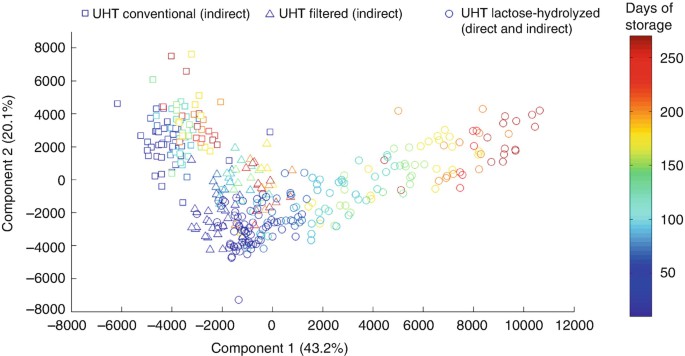NMR-based Dairy Product Analysis
Nuclear magnetic resonance and imaging technology (NMR/MRI) has been widely used in the research of dairy science due to its advantages of convenience, rapidity, and non-destructive. As an expert in the field of nuclear magnetic resonance, Creative Biostructure provides customers with NMR-based dairy products (such as milk, fermented dairy products, processed dairy products, etc.) analysis services.
Service Cases
- In milk, we use NMR-based metabolomics to analyze the relationship between the metabolism/health status of dairy cows and the milk metabolite spectrum.
- In processed milk, we use NMR-based metabolomics to detect chemical changes caused by storage, including amino acids formed by protein hydrolysis.
- In fermented dairy products, we have recently established the use of NMR-based metabolomics to study the fermentation process and clarify the synergistic and symbiotic microbial interactions.
- We used NMR to analyze the correlation between cheese metabolite and sensory characteristics of soft cheese, and identified specific metabolites that are important for cheese aroma.
Analysis of Fat Components in Dairy Products
- Butter
- Formula (Infant)
- Cheese
- Ice Cream
- Chocolate Milk
- Milk
- Cream (Heavy)
- Whey
- Eggs
- Yogurt
Analysis of Milk Composition
Milk is a very complex system. Nuclear magnetic resonance technology has many advantages, such as fast, cheap, and nondestructive testing. The NMR-based milk composition analysis we provide includes:
- Determination of fat content.
- Determination of lactose content.
- Determination of water content.
- Analysis of melting characteristics of milk fat.
- Identify organic and conventional traditional milk.
- Determine the authenticity and traceability of dairy products by analyzing the stable carbon isotope and protein fraction of fat in milk.
- Detection of antibiotics in milk.
 Figure 1. PCA score plot from a proton-NMR based metabolomics study of chemical changes in UHT milk during 270 days of storage (Bertram, 2016)
Figure 1. PCA score plot from a proton-NMR based metabolomics study of chemical changes in UHT milk during 270 days of storage (Bertram, 2016)
Milk Adulteration Detection
Because of its high nutritional and economic value, milk has gradually become the target of counterfeiting.
We provide milk adulteration identification service. The authenticity of the tested milk samples can be identified by analyzing the indexes such as the solid-liquid ratio of fat, the degree of protein denaturation and aggregation, and the water retention. In addition, magnetic resonance imaging technology (MRI) has also been applied to the detection of adulteration in dairy products.
| Sample | Admixture | Test method | Test method |
|---|---|---|---|
| Milk | Whey protein, urea, hydrogen peroxide, synthetic urea, artificial milk | 1H TD-NMR | PCA (Classification model: SIMCA, kNN) |
| Milk | Goat milk | 1H TD-NMR | PCA, ANOVA, LDA |
| Fresh milk | Water, urea, salt, sucrose | LF-NMR | PCA, PLS-DA, LDA |
| Raw camel milk, pasteurized camel milk, high-temperature instant sterilized camel milk | Milk, sheep milk, soymilk, urea, water | LF-NMR | PCA |
| Pure milk, reconstituted milk, mixed milk | Water, salt, urea, soybean milk | LF-NMR | PCA |
Analysis of Dairy Products Based on NMR
| Classification | Analysis |
|---|---|
| Yogurt | Study of complex bacterial processes in food. |
| Cheese | Analysis of water holding capacity and microstructure of cheese. Determination of fat and moisture in cheese by TD-NMR. Study cheese ripening and identification of origin. Study the development of metabolites of cheese during storage after complete packaging or open packaging. Degradation kinetics of metabolites during cheese storage. |
| Powdered Milk | Molecular mobility analysis of milk powder Analysis of molecular structure and histidine loss rate of milk powder crystal |
Creative Biostructure is committed to providing high-quality NMR analysis services to advance the life sciences fields. If you have any questions or needs, please contact us and our customer service staff will help you the first time.
Ordering Process
Reference
- Bertram H C. NMR-based metabolomics: Quality and authenticity of milk and meat. Modern Magnetic Resonance, 2nd ed.; Webb, GA, Ed.; Springer International Publishing: Geneva, Switzerland, 2016: 1-13.

